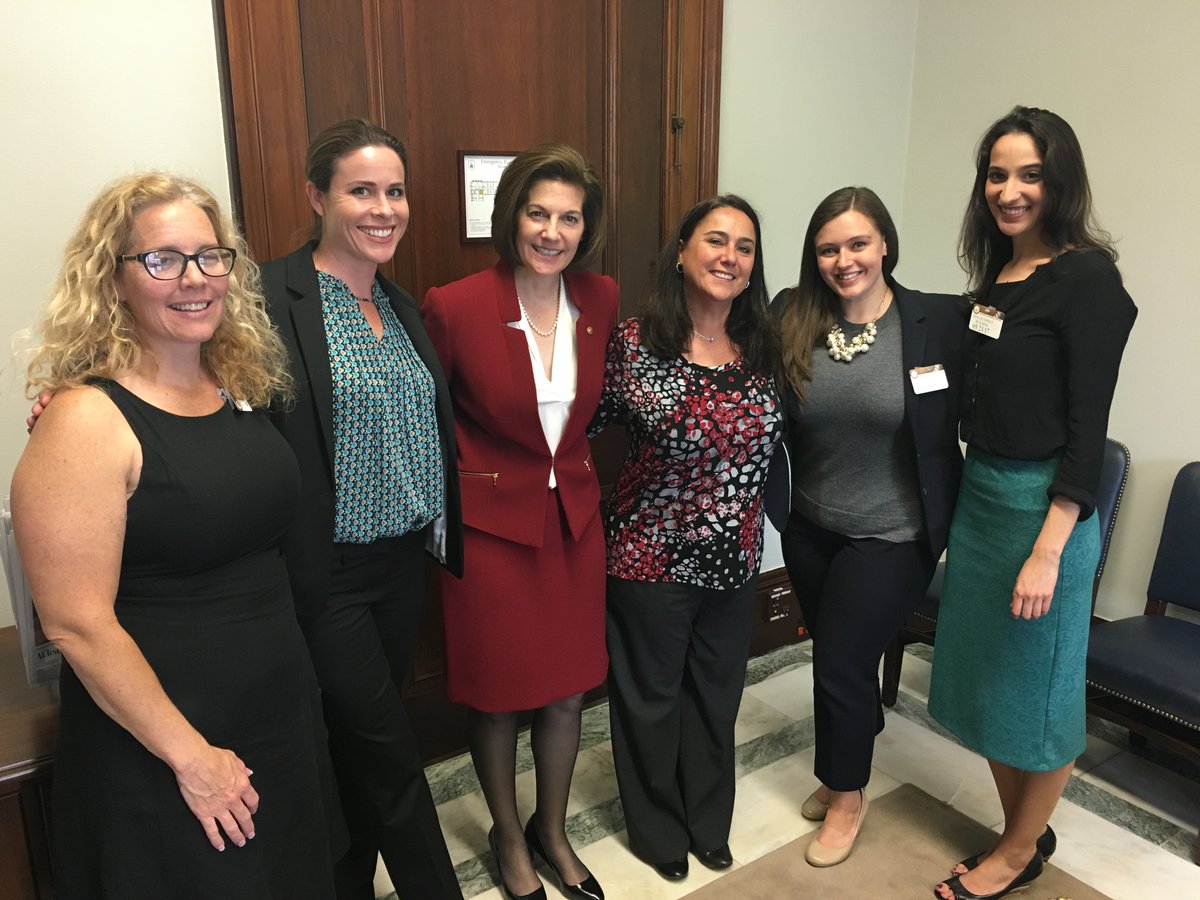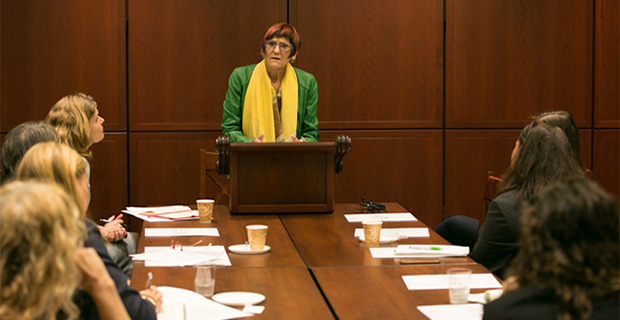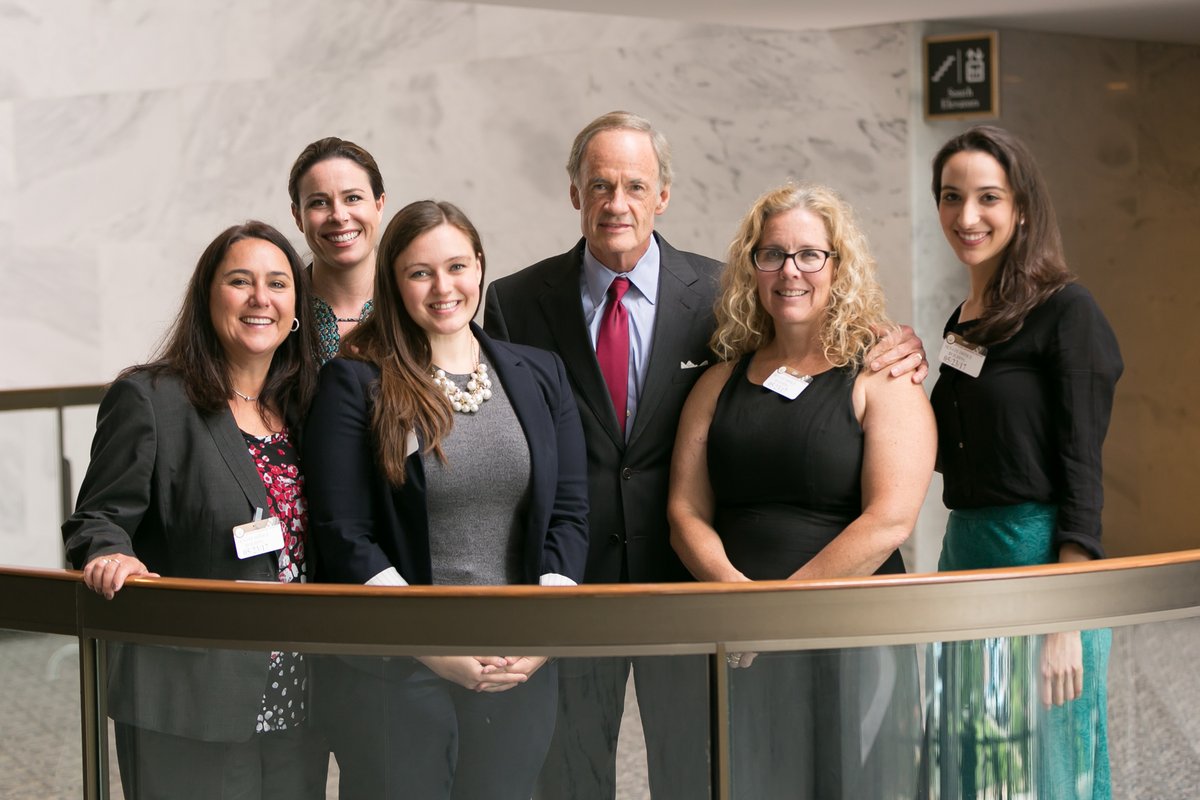The 850 pieces that are included with our “50 States – Puzzle Within a Puzzle” are designed to create 50 different mini puzzles, so that each state presents its own unique challenge to the puzzled participant. These mini puzzles can only be united as states once all of the extra-large pieces are fitted to the whole.
After my recent trip to Capitol Hill, I would argue that this design is an accurate metaphor when it comes to the politics around paid family and medical leave.
Translation: Paid family leave legislation is a paradox. The US is the only industrialized nation that doesn’t offer paid time off to care for a new child or seriously ill loved one. In fact, paid family leave legislation has only passed in four states. (Our handy interactive map will tell you what’s going on in the other 46 states!) Given that only 14 percent of US workers have access to paid family leave through their employer, it’s evident that something needs to change at the national level. With today’s diverse workforce, the Family and Medical Leave Act, which offers 12 weeks of job-protected, unpaid leave, is both outdated and insufficient, as only 60 percent of our workforce is eligible for FMLA protections.
That’s why I joined business leaders from Seventh Generation, Badger Balm, Eileen Fisher, Honest Company, and more to voice UncommonGoods’ support for the FAMILY Act to members of Congress.

Sen. Catherine Cortez Masto (D-NV) meeting with business leaders to discuss the FAMILY Act. | Photo courtesy of the American Sustainable Business Council
Sen. Kirsten Gillibrand (D-N.Y.) and Rep. Rosa DeLauro (D-Conn.) reintroduced the Family and Medical Insurance Leave Act, or FAMILY Act in February 2017. The proposed FAMILY Act would provide up to twelve weeks of paid leave each year to qualifying workers for the birth or adoption of a new child, the serious illness of an immediate family member, or a worker’s own medical condition.

Rep. Rosa DeLauro (D-Conn.) speaks to our group of business leaders about the influence business has to create a comprehensive family and medical leave insurance program. Photo courtesy of the American Sustainable Business Council
Since it was reintroduced, businesses from various industries have voiced support for this legislation, including Spotify, Levi Strauss & Co., and Patagonia. (You can read the official testimonial of UncommonGoods’ CEO David Bolotsky here.) So during the same week that the Trump administration’s 2018 budget proposal was released, the American Sustainable Business Council and the National Partnership for Women & Families invited business supporters to meet with members of Congress to have one-on-one conversations about the triple-bottom-line benefits of the FAMILY Act.
As a newbie to the Russell Senate Office Building, this experience was my pinnacle of what Patagonia Ambassador Forrest Shearer dubs the new age of citizenry: “Showing up, being part of the political process and leveraging the democratic platform we have to solve the issues we all care so deeply about.” Throughout the day, our group of business advocates met with 12 senators from 10 states (and different political parties!) with the goal of recruiting co-sponsors for the FAMILY Act.

Sen. Tom Carper (D-DE) with a few of the participating business representatives. | Photo courtesy of the American Sustainable Business Council
Below are my three major takeaways from those conversations.
1.) Bipartisan support is strong.
As Fortune reported in 2016, polls have indicated strong public support for paid family and medical leave, with almost 71 percent of Republicans and 83 percent of Democrats in favor of a paid parental leave policy. Some believe it’s one of the only issues that both parties are on the same page about (well, almost). This is the first Republican administration to consider paid parent leave in a proposed budget, which was acknowledged as a step in the right direction during many of our meetings. However, the challenge ahead will be in compromise. The proposed legislation doesn’t go nearly as far as the FAMILY Act, in that it only provides leave to new parents for the birth or adoption of a child for six weeks, with no paid leave coverage for caring for aging family members.
2.) Small business is a powerful influence.
When it comes to workplace policies, business support is crucial. After all, businesses are the entities that have to “live” these policies every day. And while companies with generous leave policies, like Netflix or Facebook, have made strong statements for this movement, these meetings opened my eyes to just how much lawmakers want to hear from small businesses. While I was able to speak to the fact that we work with makers across the US, I couldn’t speak from experience about working for a business that has fewer than 10 employees. But hearing the stories from the small business leaders who joined us, like Jeni Burns, the owner of West Virginia based catering company Ms. Groovy’s Kitchen, was very meaningful. For small businesses, it comes down to the dilemma of cost vs benefit. If sustainably funded, paid leave can be a modest program with long lasting benefits for people who you have invested valuable hours training and recruiting employees, in turn creating loyalty and financial incentive for knowledgeable employees to return to work.
3.) No one should have to choose between family and a paycheck.
Among the business advocates who joined us, many shared stories of taking time off to care for loved ones with serious illnesses, which they couldn’t afford to do without a guaranteed paycheck. It’s heartbreaking to hear these stories. As the US population ages, this problem will become more and more common for the “sandwich generation” if we don’t find a sustainable solution.
Time is ripe for both parties to work together to solve this puzzle. Learn the status of your state’s paid family leave campaign and take action: uncommongoods.com/paid-family-leave


2 Comments
Since I am a supporter, I recently received a gift from my children of the “National Parks Explorers Guide” for my almost-80 birthday party. I had a great time putting stickers on the ones I’d visited as we talked about the importance of our National Parks. I noticed that Gettysburg National Park is not listed. May I ask why?
Great question, Carol. Gettysburg actually isn’t one of the 59 sites designated a National Park–it’s a National Military Park, which, although it sounds awfully similar, is actually distinct from a National Park, hence why it’s not included on the National Parks Explorer Map.